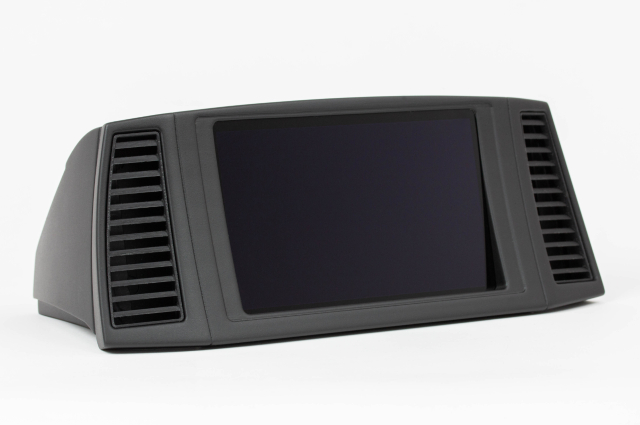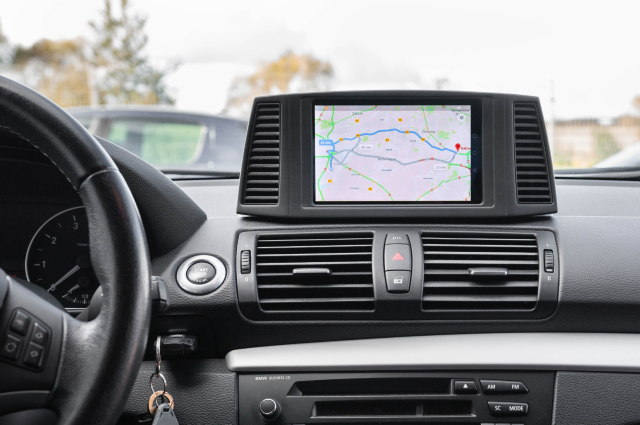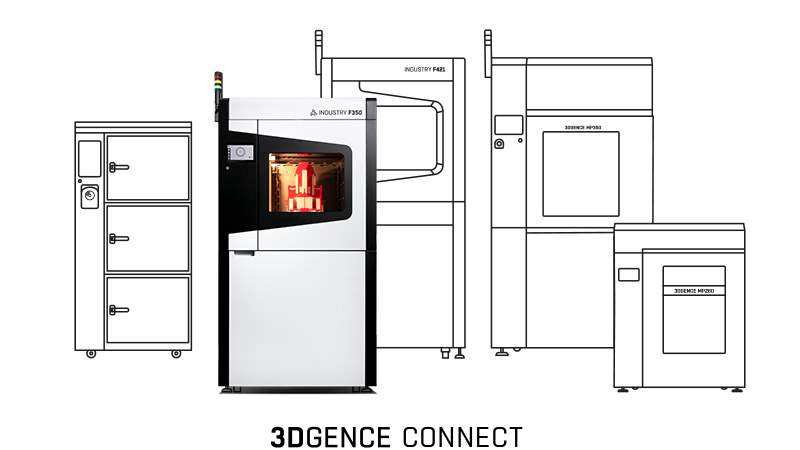End-use part
Case study
Driving a car with GPS guidance is more comfortable and less stressful for many people. A build-in tabletor screen at the dashboard seems to be the most convenient solution in that case. However, not all models are equipped with this kind of improvement. What should you do, if your cat is one of them? Well, you can change a car or produce a missing part with 3D printing technology.
Due to the lack of an original tablet holder (BMW Series 1), the owner decided to print it out. As you probably already know, additive manufacturing (AM) is a quick and affordable method to get custom items with very precise dimensions. Here is an excellent example of AM possibilities. This particular tablet car mount was made with ABS, the same material as the dashboard, in order to maintain a similar design and coherent appearance.
To obtain quality printouts, you need to provide at least two things: a professional 3D printer and well-selected filament. The use of an industrial 3D printer – 3DGence INDUSTRY F350, equipped with a large build volume (340 × 340 × 350 mm), allowed the car owner to produce large parts in one piece. Considering different options available, 3D printing turned out to be the best solution to produce a custom tablet car mount due to its complex geometry and single-unit production.
Product used in this project


Acrylonitrile Butadiene Styrene is a multifunctional thermoplastic material that enables professionals and individuals to make 3D-printed parts. ABS is a part of the commodity polymer family. It has strong resistance to acids, alkalis, and alcohol. Although ABS filament is generally not soluble, it can be dissolved in acetone, commonly used for post-processing the models and achieving a smoother surface finish.
When it comes to using ABS for 3D printing, there are advantages and disadvantages to consider. On the positive side, ABS is a cost-effective solution with decent strength, requiring minimal post-processing. This material is also easy to machine after printing. It can withstand high heat, mechanical stress, and chemicals. Additionally, ABS comes in a variety of colours and works well with soluble and breakaway support materials. On the downside, printing with ABS produces toxic fumes and odour. It requires specific settings and features for successful printing, has a risk of warping, and has low UV resistance.
ABS filament is helpful for various industrial applications due to its affordable price, good heat, and chemical resistance. It is used in industries such as automotive (for dashboards, bumpers, trusses, buttons, internal fittings, and wheel arches), aerospace, household appliances, consumer products, and robotics. Companies use it for functional prototyping, low-volume production, tooling, and end-user component printing. However, ABS is not limited to professional applications alone. 3D printing enthusiasts can also use it to print items on desktop printers, such as cosplay suits, toys, sports equipment, decorative pieces, enclosures for electronics, and musical instruments. Printing with this material may produce toxic fumes and odours. It’s strongly recommended to print in a room with good ventilation or with the use of industrial air filtration. Interestingly, the majority of world-famous LEGO bricks are made from ABS filament.
Specific settings are required to achieve high-quality prints when preparing a 3D printer for printing with ABS filament. Maintaining a constant temperature throughout printing is essential to prevent cracking, warping, and layer separation. To avoid these problems, a professional 3D printer with a heated chamber, print bed and air filtration is recommended, as it resolves these issues and allows you to unleash the full potential of additive manufacturing with ABS filament.
Working closely with our customers that decided to implement 3D printing in their daily operations, at 3DGence we witness the unlimited potential of additive manufacturing. Our company produces true industrial 3D printers and innovative filaments. We also provide 3D services, software, and accessories that boost your 3D experience and make the technology even more effective. The number of companies using solutions provided by 3DGence grows steadily. Join the 3D revolution and take your best out of additive manufacturing. Feel free to ask our expert how 3D printing may speed up your business, cutting costs and time of production and prototyping. Let’s write about taking you business to the next level thanks to 3D printing: [email protected].

Necessary cookies are absolutely essential for the website to function properly. This category only includes cookies that ensures basic functionalities and security features of the website. These cookies do not store any personal information.
Cookies that are used to recognise you and remember your preferences or settings when you return to our site, so that we can provide you with a more personalised experience.
Cookies which measure how often you visit our sites and how you use them. We use this information to get a better sense of how our users engage with our journalism and to improve our sites and apps, so that users have a better experience.
Cookies that are used to collect information about your visit to our site, the content you have viewed, the links you have followed and information about your browser, device and your IP address.